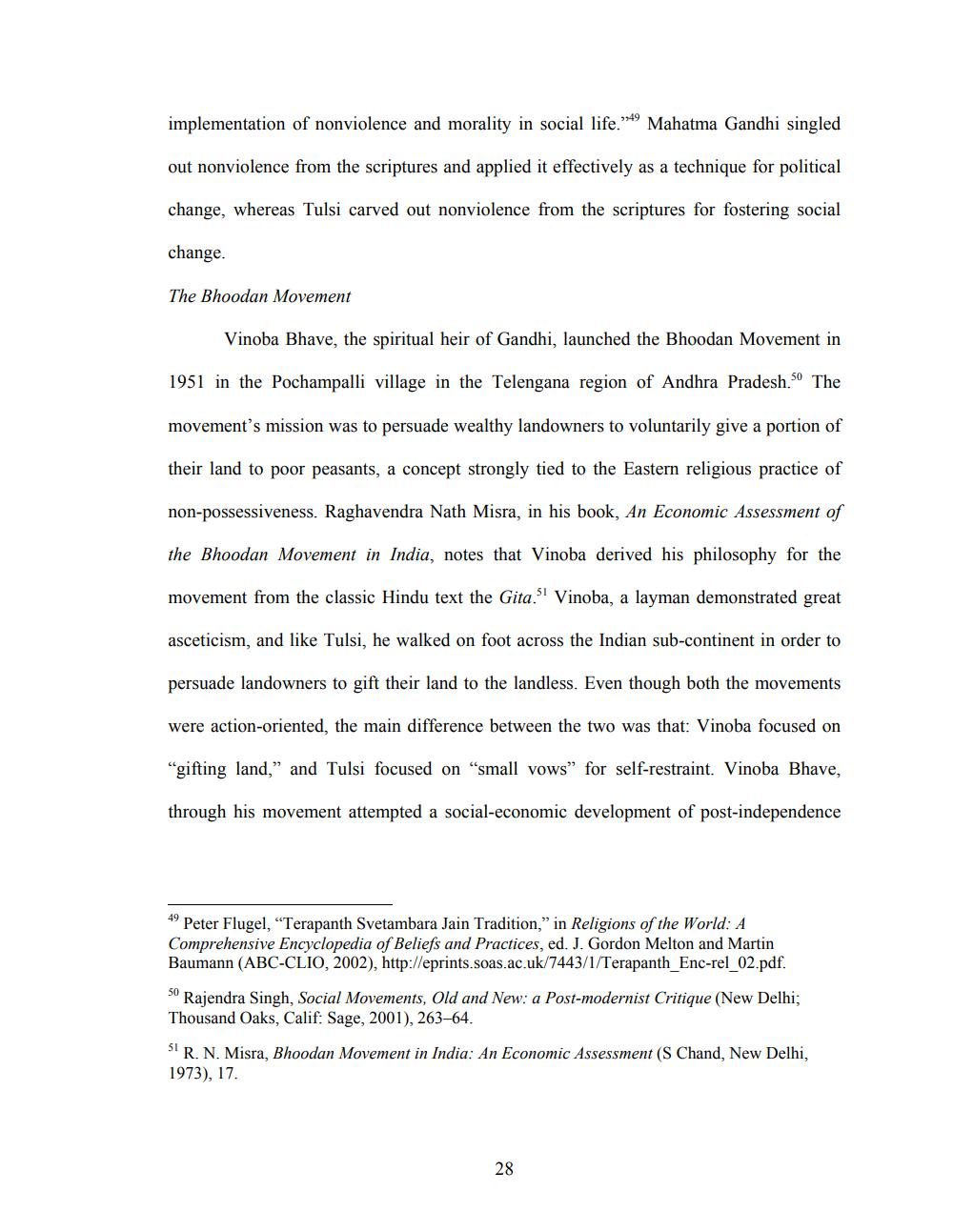________________
implementation of nonviolence and morality in social life."**Mahatma Gandhi singled
out nonviolence from the scriptures and applied it effectively as a technique for political
change, whereas Tulsi carved out nonviolence from the scriptures for fostering social
change.
The Bhoodan Movement
Vinoba Bhave, the spiritual heir of Gandhi, launched the Bhoodan Movement in
1951 in the Pochampalli village in the Telengana region of Andhra Pradesh.
The
movement's mission was to persuade wealthy landowners to voluntarily give a portion of
their land to poor peasants, a concept strongly tied to the Eastern religious practice of
non-possessiveness. Raghavendra Nath Misra, in his book, An Economic Assessment of
the Bhoodan Movement in India, notes that Vinoba derived his philosophy for the
movement from the classic Hindu text the Gita. Vinoba, a layman demonstrated great
asceticism, and like Tulsi, he walked on foot across the Indian sub-continent in order to
persuade landowners to gift their land to the landless. Even though both the movements
were action-oriented, the main difference between the two was that: Vinoba focused on
"gifting land," and Tulsi focused on “small vows” for self-restraint. Vinoba Bhave,
through his movement attempted a social-economic development of post-independence
49 Peter Flugel, “Terapanth Svetambara Jain Tradition," in Religions of the World: A Comprehensive Encyclopedia of Beliefs and Practices, ed. J. Gordon Melton and Martin Baumann (ABC-CLIO, 2002), http://eprints.soas.ac.uk/7443/1/Terapanth Enc-rel 02.pdf.
30 Rajendra Singh, Social Movements, Old and New: a Post-modernist Critique (New Delhi; Thousand Oaks, Calif: Sage, 2001), 263–64.
51 R. N. Misra Bhoodan Movement in India: An Economic Assessment (S Chand, New Delhi, 1973), 17.
28




